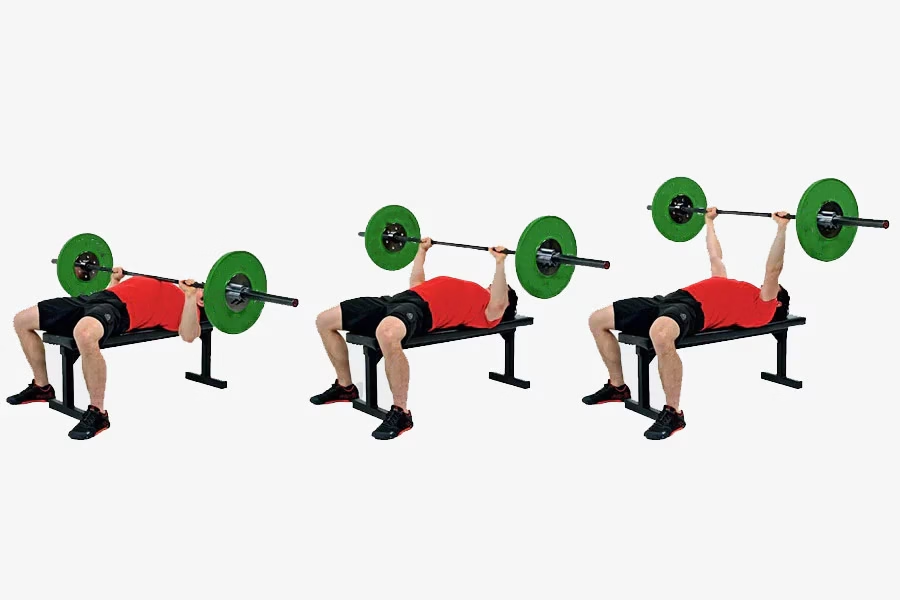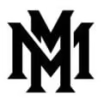Perfecting Lifting Form: The Key to Bigger Gains and Injury-Free Training
Why Perfect Lifting Form is Non-Negotiable for Bodybuilders
For anyone serious about muscle growth and building a strong physique, proper lifting form is essential. Many lifters chase heavy weights and push themselves to the max, but without perfect form, they risk injuries and miss out on potential gains. In bodybuilding, lifting form is the difference-maker—the secret that top athletes use to achieve their best results. So, if you’re looking to maximize muscle growth and stay injury-free, it’s time to make perfecting your form a priority.

Benefits of Perfect Form for Bodybuilders
When you focus on perfect form for every rep, you’re doing more than protecting yourself from injury. Proper form guarantees that every lift is effective, efficient, and focused on the target muscle. Here’s how it boosts your bodybuilding results:
- Increased Muscle Activation: When you use correct form, you engage the muscle fully, optimizing each rep for growth.
- Injury Prevention: Good form safeguards your joints, tendons, and muscles, allowing you to lift heavier over time without setbacks.
- Improved Symmetry and Balance: Proper form ensures that each side of your body gets equal work, helping you achieve a balanced physique.
- Faster Progress: Form is the foundation for heavier lifts, meaning you can progress without the plateaus and frustration that often come with sloppy form.
Essential Bodybuilding Tips for Perfect Lifting Form
Here’s a breakdown of the top techniques for mastering proper lifting form and getting the most from every workout. Incorporate these tips to maximize your muscle-building results safely and effectively.
1. Control Every Movement
- Avoid Momentum: Swinging weights or relying on momentum reduces muscle activation. By moving steadily and under control, you fully engage the target muscle.
- Focus on Eccentric Control: The lowering phase of each lift is powerful for muscle growth. Lowering weights slowly increases time under tension, which is critical for maximizing gains.
2. Embrace the Mind-Muscle Connection
- Visualize the Muscle Working: The mind-muscle connection is a technique that top bodybuilders swear by. Picture the muscle contracting and relaxing with each rep to increase effectiveness.
- Feel the Muscle, Not the Weight: Concentrate on the tension in the muscle instead of just moving the weight. This boosts muscle fiber recruitment and helps prevent injury.
3. Engage Your Core for Stability
- Brace Your Core on Every Lift: Engaging your core adds stability to your lifts and protects your spine. This is essential for heavier compound exercises like squats and deadlifts.
- Maintain Proper Posture: Keeping your back straight, shoulders retracted, and chest up optimizes alignment and prevents strain on other muscles.
4. Use a Full Range of Motion (ROM)
- Go Deep for Maximum Activation: Using a full ROM targets the muscle at every angle, stretching and contracting it fully for better growth.
- Avoid Shortcuts: Partial reps cheat your muscles of full activation and limit growth potential. Take your time to complete each rep fully.
5. Warm-Up and Cool-Down
Before Lifting: Perform dynamic stretches to activate muscles (e.g., leg swings, hip openers).
After Lifting: Focus on static stretches to improve flexibility and aid recovery (e.g., hamstring stretch, quadriceps stretch).
6. Joint Safety
Slight Bend in Joints: Always maintain a slight bend in your knees and elbows to avoid locking your joints, especially during lifts like squats and deadlifts.
Avoid Hyperextension: Don’t overextend your knees or elbows, as it can strain ligaments and joints.
7. Breathing Techniques
Bracing Your Core: Exhale during the exertion phase (e.g., when pushing the weight up) and inhale during the return phase. Proper breathing helps maintain intra-abdominal pressure and stabilizes your spine.
Structured Training Programs
To achieve long-term strength gains, it’s important to approach weightlifting systematically.
Start with Light Weights: Master your form with lighter weights before gradually increasing the load.
Increase Weights Over Time: Aim to increase the weight you lift incrementally to build strength. Aim for small, consistent progress rather than jumping to heavier loads too quickly.
Incorporate Compound Movements: Include exercises that work multiple muscle groups (e.g., squats, deadlifts, bench presses).
Target All Muscle Groups: Ensure your routine includes exercises for your upper body, lower body, and core to avoid muscle imbalances.
Rest Between Sets: Give your muscles time to recover by resting for 1-3 minutes between heavy sets.
Sleep: Aim for 7-9 hours of sleep per night for optimal recovery.
Common Mistakes in Lifting Form and How to Fix Them
Even experienced bodybuilders make mistakes in form that limit their progress. Here’s a quick guide to common errors and simple fixes that can make a huge difference in your bodybuilding results.
- Relying on Momentum: Swinging weights reduces the effectiveness of the exercise. Instead, slow down and focus on control.
- Poor Posture: Rounded shoulders or arched back can lead to injury. Always check your form in a mirror or record yourself for feedback.
- Rushing Through Reps: Speeding through reps reduces muscle tension. Focus on a slow, controlled movement with each lift.
Step-by-Step Exercise Breakdown
Understanding the proper form for each exercise is crucial. Below is a guide to mastering some of the most important lifts.
Squat
Stance: Stand with feet shoulder-width apart, toes slightly pointed outward.
Movement: Lower your hips back and down as if sitting in a chair, keeping your chest up and back neutral.
Depth: Aim to lower your hips to at least parallel to the ground, if mobility allows.
Knee Alignment: Ensure your knees track over your toes, not caving inward.
Breathing: Inhale as you lower yourself, exhale as you push back up.
Deadlift
Stance: Feet hip-width apart, barbell over midfoot.
Grip: Bend at the hips and grasp the barbell with an overhand grip.
Lift: Push through your heels, keep the bar close to your shins, and lift by extending your hips and knees simultaneously.
Back Position: Keep your spine neutral—avoid rounding your back.
Breathing: Inhale before the lift, brace your core, and exhale as you lift.
Bench Press
Stance: Feet flat on the floor, pressing into the ground for stability.
Grip: Grip the barbell slightly wider than shoulder-width, keeping your wrists straight and elbows at a 45-degree angle from your body.
Lift: Lower the barbell to your chest, keeping your elbows tucked, and press it back up to arm’s length.
Back Position: Keep your chest up, and squeeze your shoulder blades together to support your upper back.
Breathing: Inhale as you lower the bar, exhale as you press it back up.
Overhead Press (OHP)
Stance: Feet shoulder-width apart, knees slightly bent for stability.
Grip: Grip the barbell slightly wider than shoulder-width, keeping your wrists straight and elbows under the bar.
Lift: Press the bar directly overhead, extending your arms fully.
Back Position: Keep your back neutral, don’t arch excessively. Engage your core to prevent leaning back.
Breathing: Inhale as you lower the bar, exhale as you press it overhead.
Pullups
Stance: Hang from the bar with your arms fully extended, knees bent or straight (depending on your preference).
Grip: Hands slightly wider than shoulder-width, palms facing away (pronated grip).
Lift: Pull yourself up by retracting your shoulder blades and driving your elbows down and back.
Back Position: Keep your chest up, leading with your chest—not your head.
Breathing: Inhale as you lower yourself, exhale as you pull up.
Bent-Over Row
Stance: Feet shoulder-width apart, knees slightly bent, torso bent forward at the hips.
Grip: Grip the barbell with an overhand grip, hands slightly wider than shoulder-width.
Lift: Pull the barbell towards your lower ribcage, keeping your elbows close to your body.
Back Position: Keep your spine neutral, avoid rounding your back.
Breathing: Inhale as you lower the bar, exhale as you row the bar towards your chest.
These examples are meant to give you an overall understanding of what proper form looks like.
Final Tips: Mastering Form for Lasting Muscle Growth and Injury-Free Workouts
Using proper lifting form is the backbone of any successful bodybuilding routine. Form isn’t just about safety; it’s about getting the most out of every single rep. Make sure to take time to learn and perfect your form, even if it means lowering the weight. Mastering form will not only keep you injury-free, but it will also lead to faster, more balanced growth over time.
Thanks For Reading!
Trending Articles:
Do you have any questions?





